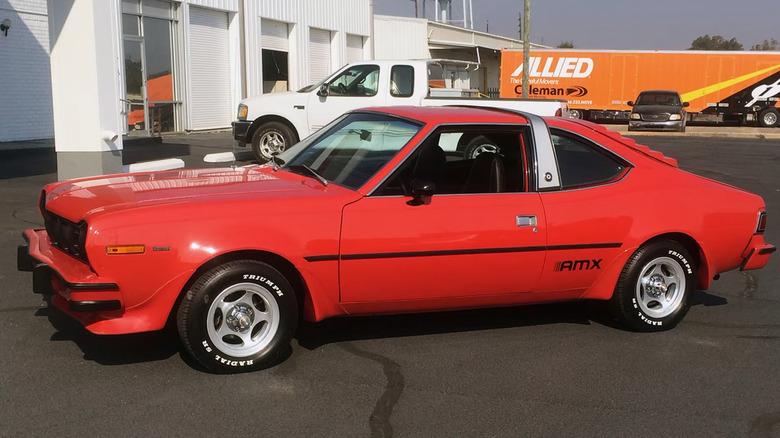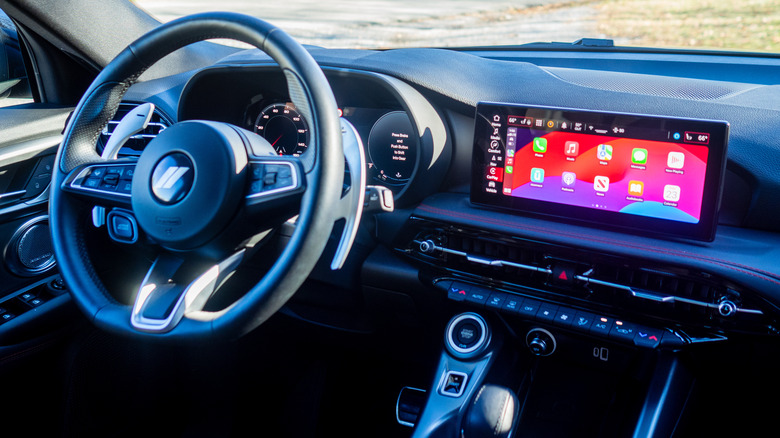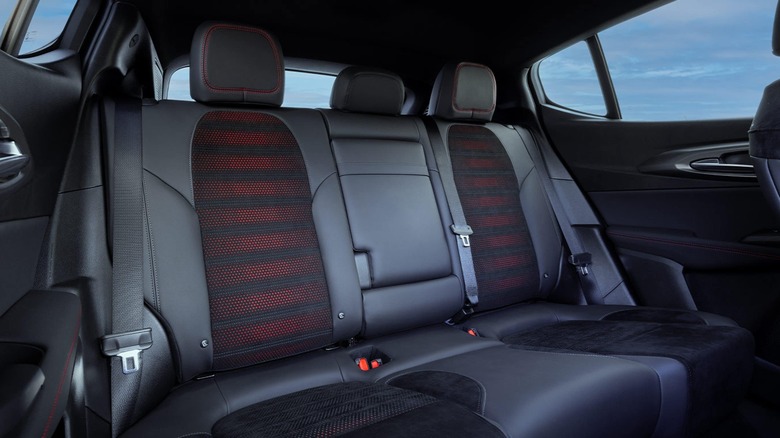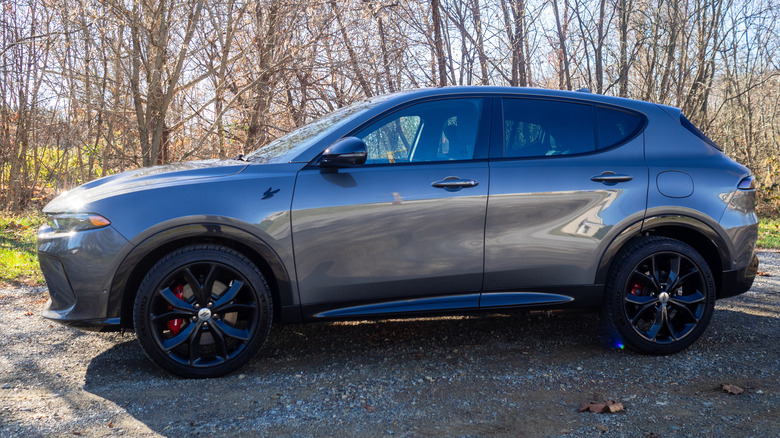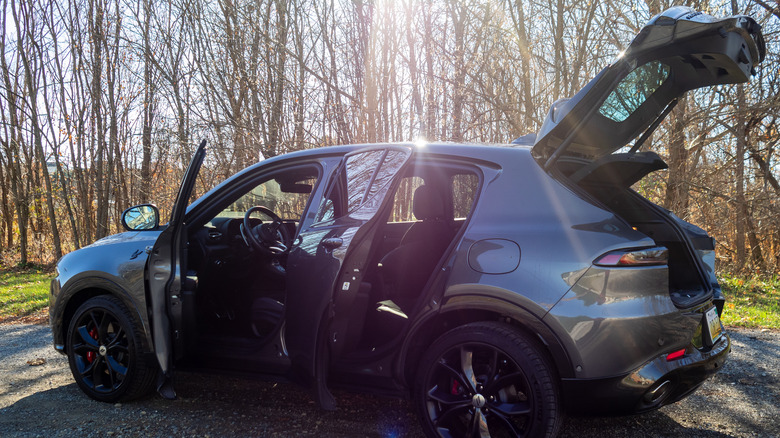2024 Dodge Hornet R/T PHEV Review: Plug-In Hybrid Crossover Is Flexible And Finicky
- Sport mode charges battery in no time
- Fairly spacious rear cargo area
- More power than the Hornet GT's non-hybrid powertrain
- Can charge the battery via the 1.3-liter turbo-four if no charging options are available
- Some key features are buried in the infotainment system
- No DC fast charging support
- Electrical gremlins persist
Dodge is first and foremost the purveyor of brutal muscle power. From the Charger Daytona and first-gen Challenger of the muscle car era, to the Shelby-fied Omni, Charger, and Shadow front-drivers and the V-10 venom of the Viper of the Eighties and Nineties, all the way to today's Charger, Challenger, and Durango, if performance was what you were after, the "Brotherhood of Muscle" was there to welcome you into the fold.
If you were looking for something in a small crossover package, though, those offerings were few and fleeting. The first was the Raider, a captive import based on the Mitsubishi Pajero/Montero from 1987 to 1989. Then came the 2007 – 2012 Nitro, based on the Jeep Liberty, and whose best year of sales was 2007 with nearly 75,000 units before the Great Recession threw everything in the air.
Then, in 2022, Stellantis repurposed the Alfa Romeo Tonale as the Dodge Hornet for the 2023 model year, giving the American muscle wing of Stellantis a compact crossover befitting of its new image. The first model was the non-hybrid Hornet GT, which held down the fort until Stellantis knocked over the nest to reveal the 2024 Hornet R/T PHEV, Dodge's first-ever hybrid of any sort. The company recently sent one of these new hybrids down to my home in Southwestern Virginia, to spend Thanksgiving with me and determine if this sting is worth feeling in the long run.
Let me feel your sting
Before the Hornet name was applied to the Dodge-ified Tonale, it was first used by Hudson in 1951 for its high-performance coupe. The name would become famous in NASCAR's early days with the "Fabulous Hudson Hornet" of 1951 through 1954 (the championship-winning ride also inspired the Paul Newman-voiced character "Doc Hudson" from the Cars franchise).
Nearly two decades later, Hudson's successor, American Motors Corporation, used the Hornet name for a compact car built between 1969 and 1977. This Hornet could be had as a two-door coupe, a four-door sedan, or a five-door wagon. One even starred as a Bond car in the 1974 classic, The Man with the Golden Gun. The Hornet name fell dormant in 1978, but the platform that bore it would go on to underpin several AMC compacts through the company's final year before assimilation into the Stellantis family in 1988, including the Concord and Eagle.
Stellantis (then known as the Chrysler Corporation) would revive the Hornet name in 2006 for a concept mini MPV powered by a 1.6-liter Tritec supercharged-four, sending 170 horsepower to the front wheels through a six-speed manual. Before anything more could be done to bring the concept into production, though, the Great Recession and Chrysler's Chapter 11 reorganization put an end to those plans. Upon Fiat's purchase of Chrysler, the Hornet name was then set for a supermini based on the Alfa Romeo MiTo, then a compact sedan based on the Alfa Romeo Giulietta (that one became the Dodge Dart), before finally landing on the Tonale.
Plug-in or fuel up: the choice is yours
Unlike the Hornet GT and its 2.0-liter turbo-four, the R/T PHEV makes do with a 1.3-liter turbo-four with two electric motors and a 12-kWh lithium-ion battery pack. Though the engine is small, it punches above the GT's 2.0-liter turbo-four. Compared to the non-hybrid's 268 horsepower and 295 lb-ft of torque (which goes through all corners via its nine-speed automatic), the R/T PHEV packs 288 horsepower and 383 lb-ft, which meets the road through a six-speed Aisin PHEV automatic, spilling out onto the tarmac through the full set of 20-inch black alloys and the Michelin Pilot Sport All Season 4s each one wears.
Four different drive modes deliver everything from quiet driving to and from work (for up to 30 miles on the battery pack), to full gasoline power to blow by the big rigs while recharging the battery.
There is, of course, another way to charge the lithium-ion battery without going through the premium tank of fuel the 1.3-liter turbo-four requires via Sport mode. The Hornet R/T PHEV comes with a charging port good for Level 1 and Level 2 charging, plus a Level 1 charging cord for plugging in the compact hybrid crossover at home. At Level 1, a full charge arrives in around 7.5 hours, while Level 2 delivers a full charge in 2.5 hours.
I never got a chance to test this out, as my home is not equipped to charge any PHEV or EV, and my usual charging spot is a Level 3-only affair. Thus, I let the 1.3-liter do all the charging in Sport mode. Not an ideal way to charge — again, the turbo-four needs premium to thrive — but I did get to experience a fully silent drive to and from Mom's work on the last morning with the Hornet R/T PHEV.
Perhaps a bit too techy for its own good
Compared to the Hornets that came before, this one has plenty of tech features that would seem like the future to someone who bought an AMC Hornet AMX new in 1977, and then some. The optional Tech Pack on the 2024 Hornet R/T PHEV adds adaptive cruise control, 360-degree camera, Level 2 assisted driving capabilities, parking assist and drowsiness detection. The Uconnect 5 Nav infotainment system housed in the 10.25-inch touchscreen offers both wireless Apple CarPlay and Android Auto, plus Amazon Alexa and SiriusXM.
And speaking of wireless, upgrading to the R/T PHEV Plus trim level adds wireless charging. There are physical buttons for things like basic HVAC options for the dual-zone climate control and the audio volume for the available 14-speaker Harmon/Kardon stereo system, which is nice, but more than a few controls for heating/cooling are buried in the touchscreen, including the heated steering wheel and heated front seats. Unfortunately — as I'll explain later — there are a few more features deep in Uconnect 5 Nav that really shouldn't be, as far as controlling the crossover is concerned.
Snug interior in the back, plenty of room up front
On cold mornings like the ones in my Old Dominion home, it is nice to have heated seating with a heated steering wheel in the 2024 Dodge Hornet R/T PHEV. The front seats themselves are bolstered on either side to hold firm to you and your favorite passenger when making those tight turns around the road and track. Your three rear passengers on the 60/40-split bench, on the other hand, may be hanging on for dear life. Not to mention you might need to move some passengers around if they're a bit too long-legged to sit in the tight confines of the rear bench; the driver and front passenger get plenty of room to stretch out their legs, on the other hand.
At least the optional R/T Blacktop and Track Package dresses up those black Alcantara seats with black and red inserts; said package also adds dual-mode suspension for extra handling fun.
Speaking of the backside of the Hornet R/T PHEV, though, the lithium-ion battery does take some space away from the cargo area, but not so much that it would be a detriment. With the rear bench upright, 22.9 cu-ft of space is available. The privacy cover is a bonus for those heading out to the shops for the holidays or other festive occasions to better hide the presents from prying eyes armed with prying bars. With the 60/40-split bench down, that space increases to 50.5 cu-ft for the biggest items; there's even a pass-thru for skis, in case you don't wish to carry such items on the roof.
Bring the anti-venom
For as thoughtful as the Hornet's cabin is, elsewhere some elements of the plug-in hybrid could possibly do with a rethink. Take shifting into Neutral to put the crossover through a local automatic car wash: something you'd think would be sufficient by itself. Instead, there are a couple of extra braking settings buried deep within the infotainment, which had myself and a couple of car wash attendants scratching our heads until we located them.
That — like bringing the heated seat controls further up in the menu structure — could be addressed with an interface update. More worrying were the electric gremlins that popped up during my week with the Hornet R/T PHEV. Take, for example, electric seat adjustment that simply failed to operate after going through said-car wash, until I restarted the car, something which happened to me twice. The 360-degree camera is useful when you're parking, but not when it suddenly deactivates mid-maneuver, as I experienced.
2024 Dodge Hornet R/T PHEV Verdict
It's good that Stellantis gave Dodge a high-performance compact crossover befitting of the brand's vibe and image with the Hornet. The power of the turbo-four hybrid is fun on its own, as well as the ability to go silent on EV-only mode for those early morning drives in and out of the neighborhood. The price of admission isn't too bad, either, with the base R/T's MSRP starting at $41,400, the R/T Plus beginning at $46,400, and as-tested at $52,305 total sticker with shipping and destination; the base Alfa Romeo Tonale starts at $45,440 in comparison.
The R/T PHEV can also tow up to 2,000 pounds, placing it near competitors like the Ford Bronco Sport and Mazda CX-50. Gas mileage is solid: 29 mpg combined on premium alone, or 77 MPGe combined with the hybrid system in play. I managed around 25 mpg due to in-town driving on Sport mode.
While the powertrain is capable, the Hornet's electric mishaps did leave me second-guessing overall reliability. Perhaps this particular car needs to go into the shop, but it doesn't exactly inspire confidence. The newest bearer of the Hornet name and legacy may not coax James Bond into a plug-in hybrid, but get past the gremlins and there's plenty to like about its combination of economy and performance.

